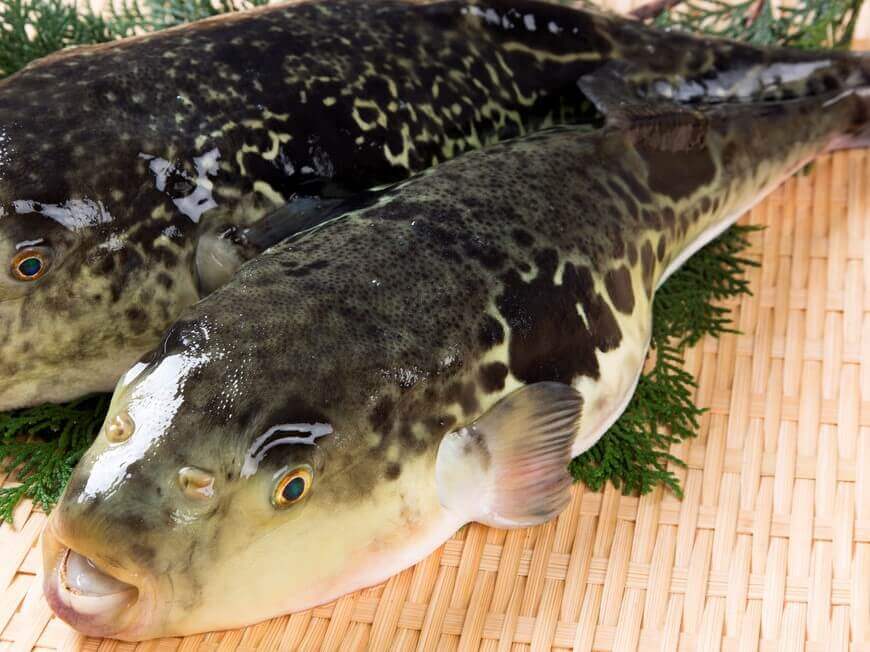Why do people risk their lives to eat Fugu, a fish known to be deadly?
 Fugu, or blowfish, is a celebrated delicacy in Japanese cuisine, but it comes with a deadly risk. Despite its exquisite taste and refined culinary presentation, Fugu contains one of the most powerful natural toxins known to humans. Understanding what makes this fish so dangerous—and how it’s safely prepared—sheds light on one of the most fascinating aspects of Japanese food culture.
Fugu, or blowfish, is a celebrated delicacy in Japanese cuisine, but it comes with a deadly risk. Despite its exquisite taste and refined culinary presentation, Fugu contains one of the most powerful natural toxins known to humans. Understanding what makes this fish so dangerous—and how it’s safely prepared—sheds light on one of the most fascinating aspects of Japanese food culture.
In most cases, Fugu (blowfish) poison is found in non-meat parts of the fish such as the liver, ovaries, stomach, intestine, skin and eyes. There are Fugu that do not contain poison in these parts, but most of the Fugu in the waters near Japan are poisonous. A mistake in preparations that allows the meat to touch the poison of the liver or ovaries results in immediate death. Therefore, the general rule is to only eat Fugu at restaurants with an expert licensed in Fugu preparation. Cases of poisoning by Fugu are nearly always a result of an amateur trying to prepare the fish.
The toxin in Fugu is a chemical substance called tetrodotoxin and even heat from boiling or frying can’t detoxicate it. Even Torafugu (Japanese pufferfish) that we find so delicious (we eat the meat, skin and testes) has poison in the liver, ovaries and intestines. The toxicity is said to be at least 1,000 times that of potassium cyanide. They say 10 people would die from the organs of a single Torafugu. In the case of Fugu poisoning, the first poisoning symptoms occur between 20 minutes and three hours after eating the Fugu. It starts with numbness in the lips, the tip of the tongue and fingertips. This is followed by headache, stomachache and severe vomiting. The victim will stagger when trying to walk. Soon they will experience sensory paralysis, speech disturbance and difficulty breathing, accompanied by a decrease in blood pressure. After that, the entire body becomes paralyzed and the victim can no longer move even a finger. Finally, they will fade out of consciousness and eventually both breathing and heartbeat cease, resulting in death. If the consumer doesn’t notice they are experiencing poisoning symptoms, they will surely die.
The strength of the toxin of the fugu also varies depending on the season. Even on an individual basis, some fish have toxins while others don’t. It’s not possible to determine this based on appearance, so it’s better to never eat the organs and eyes, which have a high probability of containing poison.
Fugu has already been successfully farmed and is on the market. No toxins have been found in this farmed Fugu. If farmed Fugu has no toxins, it’s only natural to question what factors generate toxins in wild Fugu and apparently it‘s a cumulative effect of toxins from the food chain. Fugu’s main sources of nutrition are starfish and shellfish. Starfish and shellfish accumulate poison in the body by eating zooplankton with vibrio attached to them. This vibrio creates poisons. Then, Fugu accumulates toxins in the body by eating starfish and shellfish that have toxins accumulated in their bodies. Therefore, farmed Fugu are raised on man-made feed that doesn’t contain Fugu toxins, and since they don’t ingest Fugu toxins and there is no bioconcentration, so the Fugu does not contain poison.
Enjoying Fugu safely requires more than bravery—it requires expertise.
While the thought of eating a potentially lethal fish may seem reckless, the strict regulations and skilled craftsmanship behind Fugu preparation make it one of the safest delicacies when handled properly. As farmed Fugu becomes more common and toxin-free, the dangers may be diminishing—but the mystique surrounding this unique fish remains as strong as ever.
[sc_apply url=”https://sushiuniversity.jp/apply/”]
We hope this information will be helpful.

Revision date: August 7, 2025
Share this article
good article, I just found out that fugu fish has a very deadly poison
Thank you for reading through this website. See you next time.